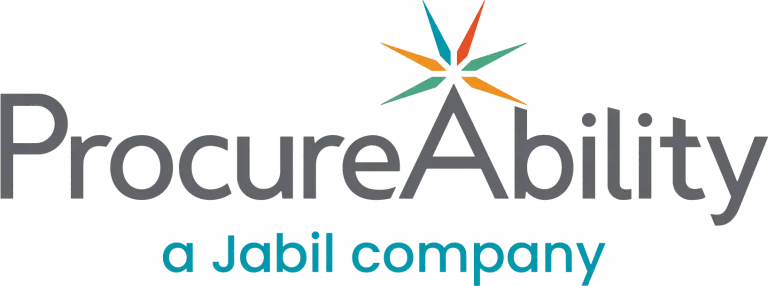In today’s fast-paced environment, upskilling your procurement team is essential to maintain a competitive edge. As a procurement leader, you must understand industry trends to train your team. This empowers them to drive innovative solutions, deliver value, and become strategic partners in business growth. To stay ahead, you need to learn, adapt, and evolve continuously.
The success of any organization depends on its procurement team’s strategic approach to sourcing and procurement. Over time, business leaders have increasingly relied on procurement not just to acquire products and services but also for insights that inform strategy. As procurement teams gain visibility, they must adapt tools, capabilities, and mindsets to enhance their value. Emerging technologies have accelerated this transformation, leading to hybrid teams that combine experienced professionals with younger, tech-savvy talent.
In the first installment of ProcureAbility’s ‘Future of Procurement’ Insights series, we explored leading strategies for recruiting top talent to meet the demands of the procurement department. In this second installment, we delve into what it takes for procurement leaders to build successful teams from within, focusing on their internal dynamics and strategies.
Start with a solid foundation
Whether your procurement team is made up of seasoned professionals or early-career employees, all team members need ongoing skill development. This means fostering a culture of continuous improvement, innovation, and cross-functional collaboration. Encourage your team to stay current on industry trends, strengthen their negotiation skills, and build strong supplier relationships.
Your team needs clear guidance and a solid foundation for success. In today’s evolving operational landscape, this translates to:
Defining clear objectives by outlining your procurement department responsibilities and goals with the organization’s strategic vision, to provide a clear sense of purpose and direction for team members. For example, what are your organization’s goals around supplier diversity and risk management?
Developing a structured team composition based on your organization’s procurement needs, considering roles such as sourcing specialists, category managers, procurement analysts, and supplier relationship managers, ensuring a balance of skills and expertise.
Implementing clear processes and workflows to streamline operations and ensure consistency, including clear documentation of sourcing strategies, supplier evaluations, and contract management procedures.
Providing new procurement technology and tools to enhance efficiency and accuracy, including the latest procurement software that can automate processes, facilitate data analytics, and improve decision-making. This could include the use of artificial intelligence (AI) for demand forecasting and data analytics for supplier performance evaluation1.
Building strong supplier relationships by emphasizing collaboration, mutual growth, and innovation—elements that generate better supplier performance, reduce risks, and increase value2.
Training and development
With these enablers on hand, the next ingredient for success is ensuring your team’s skills and capabilities remain not only relevant but differentiated as well. A well-trained procurement team is better equipped to navigate the complexities of global supply chains and risk management. That kind of training and development takes focus and dedicated resources.
1. Identify existing skills and capability gaps
Look at areas such as negotiation, market analysis, contract management, and supplier relationships. What are your team’s strengths? What skills are underrepresented? Where could you build a deeper bench?
2. Provide training and development opportunities to strengthen skills
Invest in workshops, webinars, conferences, certification programs, and learning budgets to help your team expand their knowledge in key areas.
3. Earn industry-recognized certifications
Seek out certificates from organizations such as ISM, CPSM, or CIPS. These credentials boost professional credibility and create opportunities for advanced roles.3,4
4. Partner with an external entity for training and development of your team
Such partnerships often bring forth industry experts with a fresh, external perspective and specialized knowledge that can enhance the skills of the procurement team. These partners typically have a wide range of proven methodologies, tools, and techniques that have been successfully implemented in diverse industries, which can be tailored to the organization’s unique need.
5. Continue to provide training opportunities on an ongoing basis
Keep your team updated with industry trends, best practices, and emerging technologies. Continuous learning and development foster employee engagement and retention, thereby contributing to the overall growth and success of your organization.
Focus on building out the right kind of culture
Strong culture and leadership are essential to your procurement organization’s cohesiveness and ensures clear communication and alignment with your organizational goals. You can start building the right kind of culture today by considering the following best practices:
Support cross-collaboration with other departments like finance, legal, and operations to create mentorship opportunities and infuse procurement strategies across the organization.
Foster a culture of continuous improvement. Encourage team members to explore innovative solutions, learn from mistakes, and suggest process enhancements. Promote regular review of processes and gathering feedback from stakeholders and suppliers to drive ongoing improvements.
Implement a recognition and reward system that acknowledges exceptional performance, providing motivation and supporting job satisfaction among team members. Establish clear performance metrics and key performance indicators (KPIs) to measure the effectiveness of procurement initiatives.
Prioritize employee well-being by promoting work-life balance, flexible work arrangements, and mental health support.
Put your procurement recruiting process under the microscope
When it comes to building a world-class procurement team, you will likely need to bring in outside talent, even as you focus on developing your team internally.
First, reflect on your previous recruitment efforts: Did you successfully compete for qualified candidates? If not, why? Can you identify your most successful new hires and the qualities they possess? By implementing the recommendations above, you can improve your ability to attract the right people. For example, recruiting candidates with a specific cultural fit will help drive the changes you want within your organization.
Next, finding the right partner is essential to ensure you have the resources and insights needed to build a top-performing procurement team. ProcureAbility brings the expertise and experience needed to help you train and develop your team’s talent, build a strong and resilient culture, and analyze your recruiting process.
Furthermore, by strategically addressing these aspects and collaborating with outside experts, you can create a procurement organization that is well-equipped at every level, aligned with your company’s objectives, and positioned for sustainable, long-term success.
Finally, in part three of ProcureAbility’s ‘Future of Procurement Talent’ Insights series, we will explore effective strategies and best practices for retaining top procurement talent, through creating a supporting work environment that boosts job satisfaction, engagement, and long-term commitment.
Notes:
1 Procurement Technology Acceleration
2 A Human-centered Approach to Managing Relationships With Suppliers
4 sig.org
Author




